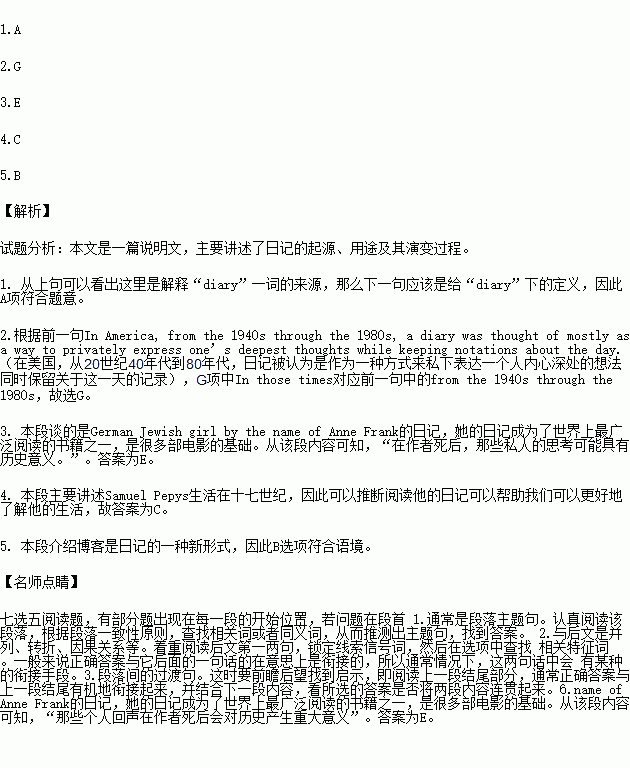题目内容
The word “diary” comes from the Latin word “diarium”, which means “daily allowance”. 1. And it is used for business notes, planning activities, keeping track of scheduled appointments, or documenting what has already happened. Some doctors suggest that writing in a diary is a good form of self-study.
In America, from the 1940s through the 1980s, a diary was thought of mostly as a way to privately express one’s deepest thoughts while keeping notations about the day. 2. Many times, movies would show a teenage girl beginning to write in her diary while she said aloud, “Dear diary…”.
3. A diary kept by a young German Jewish girl by the name of Anne Frank provides us with invaluable lessons about history, for she documented her experiences while she hid from the Nazis during their occupation of the Netherlands in World War II. Her diary became one of the world’s most widely read books and is the basis for many films.
a.
Samuel Pepys, who lived during the 17th century, is the earliest diary keeper that is famous today. His diary is also an important documentation of history, for it gives personal insight(洞察力) into London’s Great Plague and the Great Fire. His diary is being published on the Internet, and it’s interesting to note that there has been a new entry every day since January of 2003. It will continue over the course of several years to come. 4.
Today’s electronic version of the diary, the web log or “blog” has once again stretched the diary to be much more than a personal account of the day’s events. There are blogs to document recipes, traveling, movies, independent news, product announcements, photos, and anything else that needs to be recorded over time. Search engines like Technorati.com have been created to keep track of the more than 112 million blogs that are currently public. 5.
A. It refers to a book for writings by date.
B. In its newest form, the diary has become more popular than ever.
C. Reading his diary is fascinating, and it makes his life all the more real to us.
D. People love to write diaries, so whenever they are free, they will write a few lines.
E. Those private reflections may have historical significance long after the author’s death.
F. Nowadays, the blog has taken the place of the diary and becomes more and more popular.
G. In those times, and even continuing on today, writing in a diary was like writing to a special friend.

